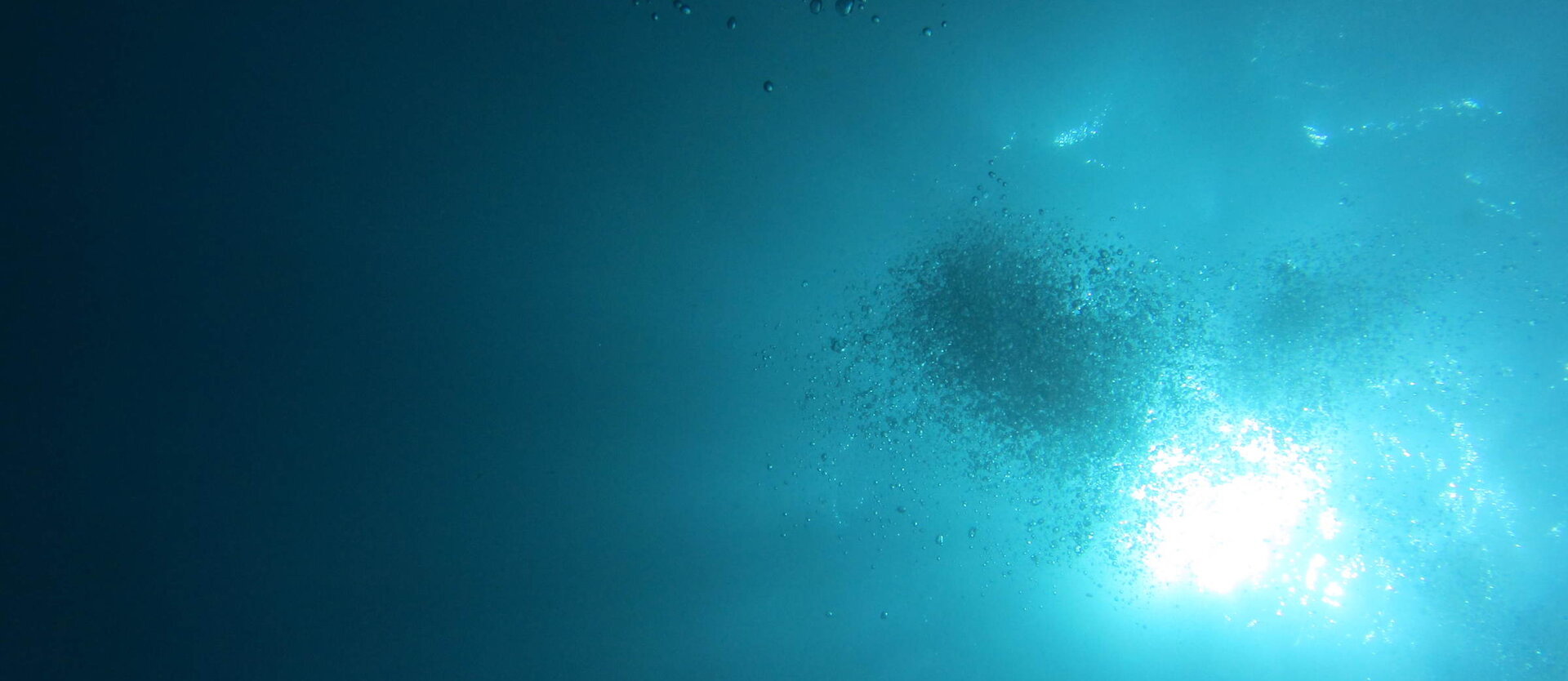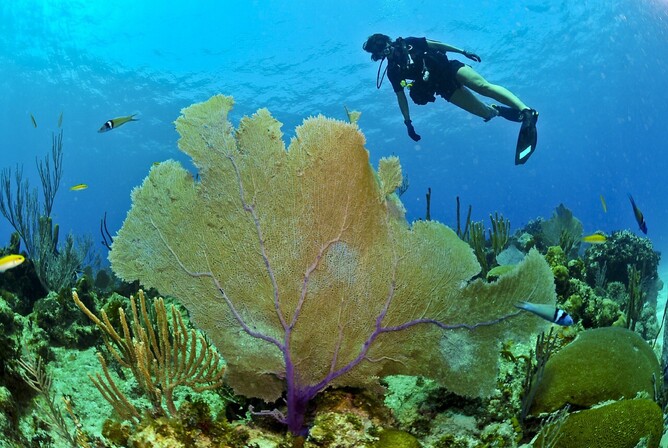Unfortunately we’ve all heard the words ‘coral bleaching’ being used more and more in the last few years, but it’s not always explained to the full extent that it could be.
So firstly, what exactly is coral?
Although coral looks like a plant, it is actually an animal. It's not classified as a plant because it doesn't make its own food like most plants do through photosynthesis.
Coral has minuscule, tentacle-like arms that sweep food - like tiny zooplankton - in the water in order to eat.
Coral is part of an ancient and effective symbiotic partnership, and this partnership is exactly why coral reefs are the largest biological structures on Earth - and they rival primary forests in longevity. Most corals contain a specific algae called zooxanthellae. These are plant-like organisms, and they live within the coral’s tissues - it's where they use the metabolic waste from the coral for photosynthesis. In turn, the coral benefits from this as the algae is removing waste, producing oxygen and providing organic products that coral uses to thrive.
You may have heard the term ‘polyp’ being used frequently when talking about coral - this is because coral reefs are made up of thousands of polyps. They are tiny animals that are related to jellyfish and sea anemones. Polyps are able to live by themselves, or in huge structures - as we know them ‘coral reefs’.
A polyp will have a sac-like body and an opening (like a mouth) which is encircled by stinging tentacles - these are called nematocysts or cnidae. Seawater contains lots of calcium and carbonate ions, and polyps use these to build themselves hard, cup-shaped structures as a skeleton out of calcium carbonate (limestone). These limestone structures attach to rocks or other structures, and are the beautiful structures we see in our oceans, and the skeleton is what protects the inner, soft body of the polyp.
Most coral polyps have clear bodies - the skeletal structures are white after all. However, the zooxanthellae living in them produce pigments that are visible through the clear polyps, and this is what gives coral the vibrant, beautiful colours that we stereotypically think of. Millions of zooxanthellae live and produce pigment in just one square inch of coral.
So what exactly is coral bleaching?
From a simple standpoint, it is when coral lose their vibrant colours and turn white. But there is so much more to it than a simple loss of colour. As mentioned previously, it is the algae zooxanthellae that gives the coral its vibrant colour, however when the coral becomes stressed - for example when the waters become too hot - the coral expels the algae and fades to a ghostly white - giving it the ‘bleached look’. Furthermore, because the temperatures stay high, the coral is not able to gain the algae back, and although the coral may survive the initial bleaching event, it will eventually die without the algae. The leading cause of coral bleaching is climate change.
For example, in 2005 the U.S. lost as much as half of its coral reefs located in the Caribbean in only one year because of a huge bleaching event. It was confirmed from satellite data that the thermal stress that caused the event was greater than the 20 years prior, combined before it.
However, it is not always the higher temperatures that bring on bleaching events. In January of 2010, extreme colder water temperatures in the Florida Keys resulted in a coral bleaching event. The temperatures dropped 12.06℉ lower than usual and scientists concluded this was the cause of the bleaching. A change as little as 2℉ can cause coral to drive out the algae. This is why climate change is so dangerous - extremes at both ends of the spectrum can lead to disaster.
It is possible for coral bleaching to occur because of other factors - like too much sunlight, low tides, pollution and even suncream! So be sure to check that your suncream is ocean friendly before you use it.
Now, the next question is obvious - why is coral so important that we worry about it bleaching?
Coral reefs are an essential backbone to so many of our ocean’s ecosystems. All ecosystems are intrinsically linked - if one member starts to struggle, you’ll see the signs in others too.
Coral reefs are home to some of the most biodiverse ecosystems on Earth - thousands of species can be found on one reef alone! For example, the Great Barrier Reef has over 400 coral species, 6 of the 7 sea turtle species, 1,500 fish species and 4,000 species of mollusc living within it. The reefs provide shelter, spawning grounds, protection and cleaning stations. When the coral reefs collapse, so does the ecosystem they sustain; species that are already at risk may suffer further.
However, it is not only marine life that reap the benefits from coral reefs - we do too. Perhaps most importantly they generate half of the Earth’s oxygen and absorb nearly ⅓ of the carbon dioxide that is generated when fossil fuels are burnt.
However, coral is also important commercially. It is estimated that coral has a global value of £6 trillion each year! As divers, we know how wonderful it is to dive coral reefs, so we’re not surprised by this number in the slightest! This is down to the fishing, tourism and coastal protection that they provide us with. They can reduce wave energy by up to 97%, and this is crucial from threats like tsunamis. They also protect mangrove forests and seagrass beds - these are crucial nesting and nursery grounds for many species and human coastal populations.
Coral bleaching jeopardises all of this. When bleached, the coral becomes weak and brittle - it is harmed much more easily. Sometimes, it is impossible for the coral to recover, and if they do die it is rare that that reef will ever return. But if they do, it can take decades for them to return to their standard before the bleaching event. This is also why bleaching is so dangerous - recovering coral can take over twice the amount of time to recuperate as it does to bleach.
After reading all of this, you may be panicking - what is being done to help/prevent wide scale coral bleaching?
It is not set in stone that we are to lose all of our coral reefs to bleaching, but immediate action must take place if we want to preserve them and everything that they help with. If the issues are to be properly solved, we must address climate change - and see results globally. This may seem like a daunting task, but if we work together to call out injustice when we see it, we will see positive results.
Many places we have dived have coral nurseries being cultivated - coral that is protected and once it has grown to a suitable size will be replanted and continue to grow.
A scientist in Florida - Dr David Vaughan - made an accidental discovery in which it was made possible to grow corals up to 40 times faster than in the wild! This was considered a breakthrough. Corals usually take 25 to 75 years to reach sexual maturity, however his discovery allows the coral to reach maturity in just 3 years. Read more about it here, Plant 1,000,000 Corals.
So there is hope out there for coral reefs! There are opportunities out there for anyone if they wish to help too - for example WWF has initiatives.
Enjoy this article and want to know more about Dive Bunnies?
Are you a new or novice diver and want to get more involved with Dive Bunnies? Why not join our Facebook Group and make some new friends - we would love to hear from you!






